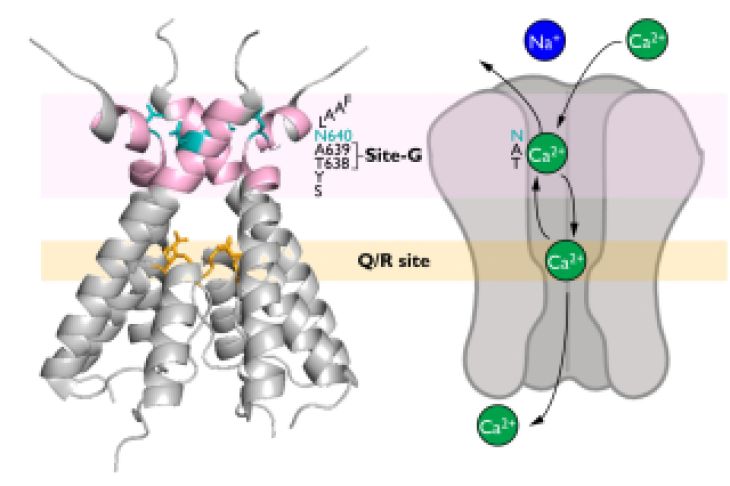A new study from a team of McGill University and Vanderbilt University researchers is shedding light on our understanding of the molecular origins of some forms of autism and intellectual disability.
For the first time, researchers were able to successfully capture atomic resolution images of the fast-moving ionotropic glutamate receptor (iGluR) as it transports calcium. iGluRs and their ability to transport calcium are vitally important for many brain functions such as vision or other information coming from sensory organs. Calcium also brings about changes in the signalling capacity of iGluRs and nerve connections which are a key cellular events that lead to our ability to learn new skills and form memories.
iGluRs are also key players in brain development and their dysfunction through genetic mutations has been shown to give rise to some forms of autism and intellectual disability. However, basic questions about how iGluRs trigger biochemical changes in the brain’s physiology by transporting calcium have remained poorly understood.
In the study, the researchers took millions of snapshots of the iGluR protein in the act of transporting calcium, and unexpectedly discovered a temporary pocket that traps calcium on the outside of the protein. With this information at hand, they then used high-resolution electrophysiological recordings to watch the protein in motion as it transported calcium into the nerve cell.
“The results are important because we describe for the first time the mechanism by which calcium is transported, which ultimately drives the cellular processes that lead to learning and memory,” said Derek Bowie, McGill’s lead author of the study, published in Nature Structural and Molecular Biology and co-Director of the Cell Information Systems group in the School of Biomedical Sciences.
The biological mechanism discovered is not only conserved amongst all species of mammals, but is also found in organisms that branched away from the evolutionary pathway of humans more than 500 million years ago.
“The original blueprint of the protein design was so good it seems that evolution did not need to change it,” said Bowie.
“Visualizing the tiny ions and water molecules in the channel pore using cryo-EM technology was quite an amazing experience. It highlighted an ancient calcium binding pocket which we were able to understand further from a functional perspective in collaboration with Bowie Lab. Our finding is fundamental to calcium signaling in neurons and raises interesting hypotheses about synaptic function that could be tested by experiments in the future,” said Nakagawa, Vanderbilt’s lead author and Professor at the Department of Molecular Physiology and Biophysics at the School of Medicine.
About the study
The open gate of the AMPA receptor forms a Ca2+ binding site critical in regulating ion transport by Teru Nakagawa, Xin-tong Wang, Federico Miguez-Cabello and Derek Bowie, was published in Nature Structural & Molecular Biology







